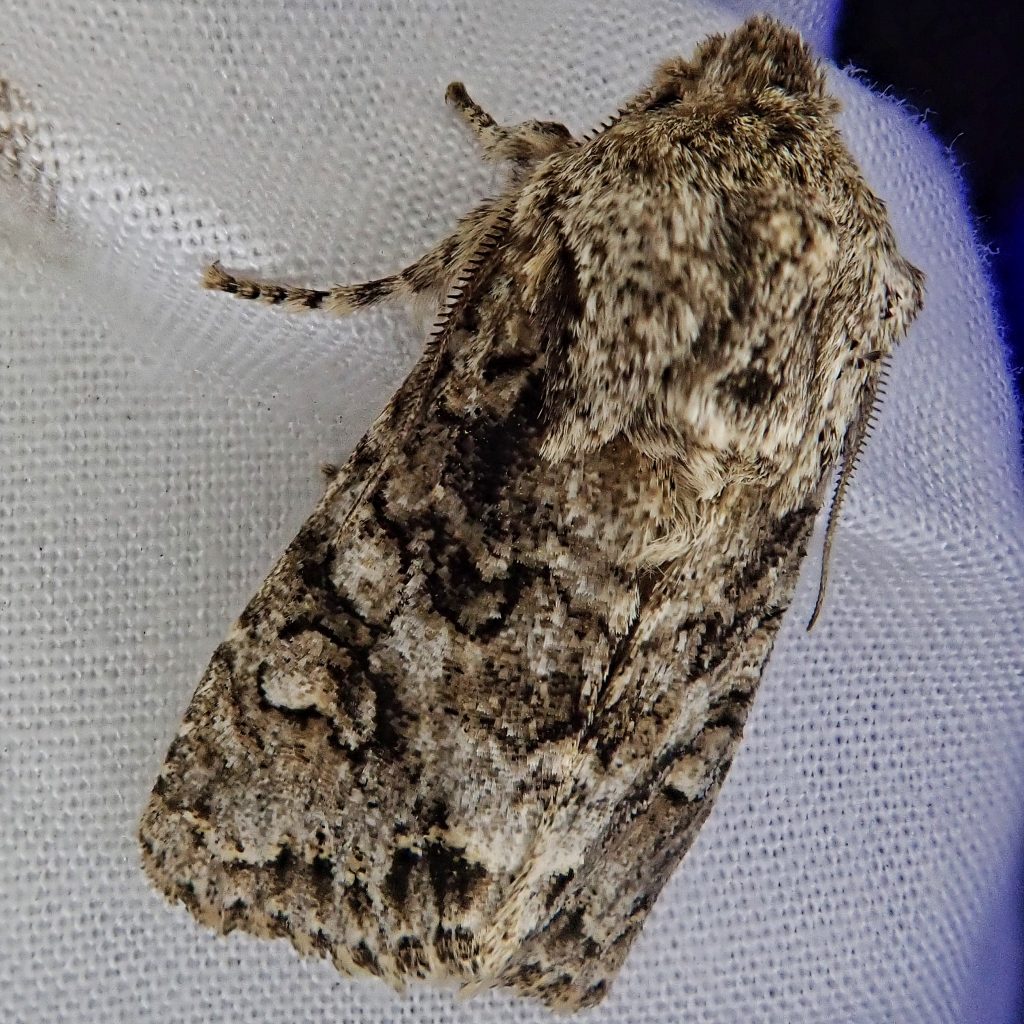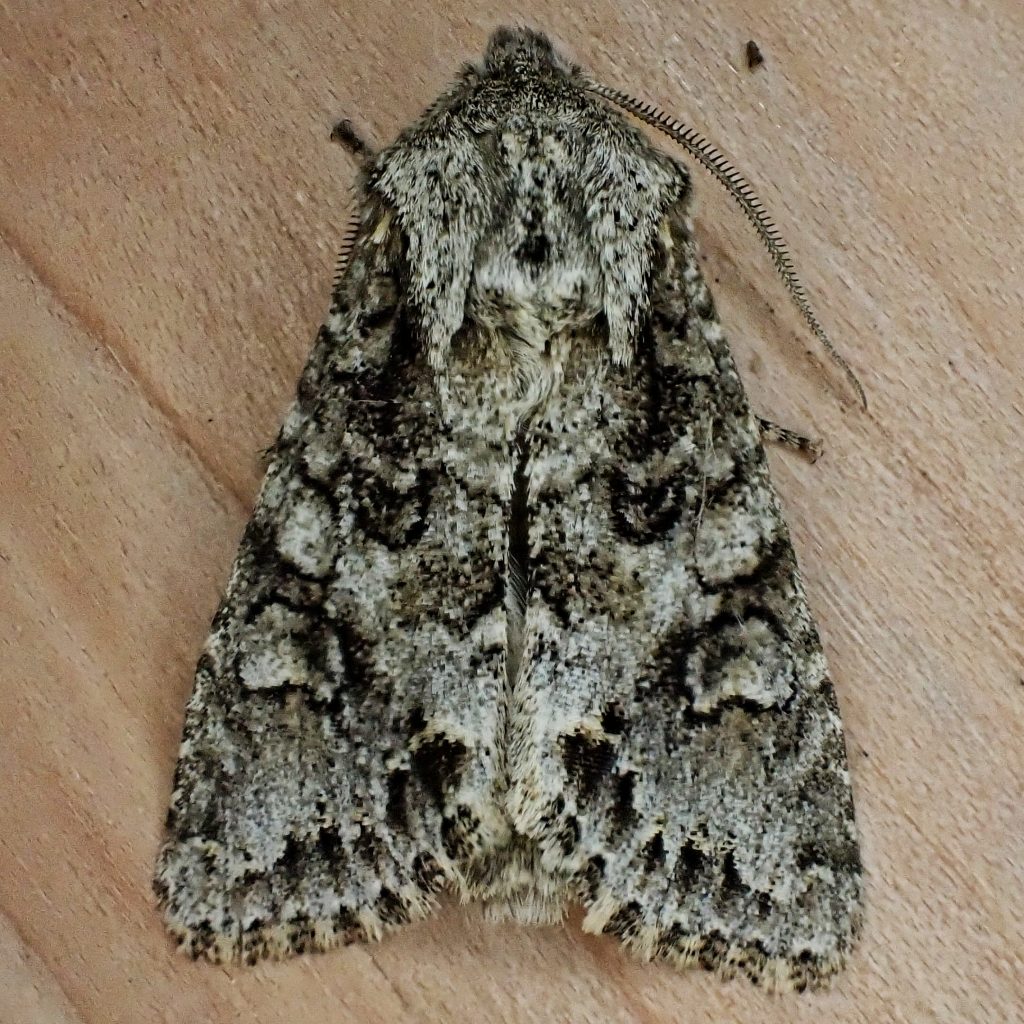
Egira februalis is an early spring flying Noctuid moth found in oak woodlands, and it is a moth that I hadn’t found before. They can apparently be very common where there are a lot of oaks, but I didn’t end up mothing in that habitat until later in the year last year. And, while there are many oaks in the Vancouver Lake bottoms, they are scattered due to removal for agricultural purposes.
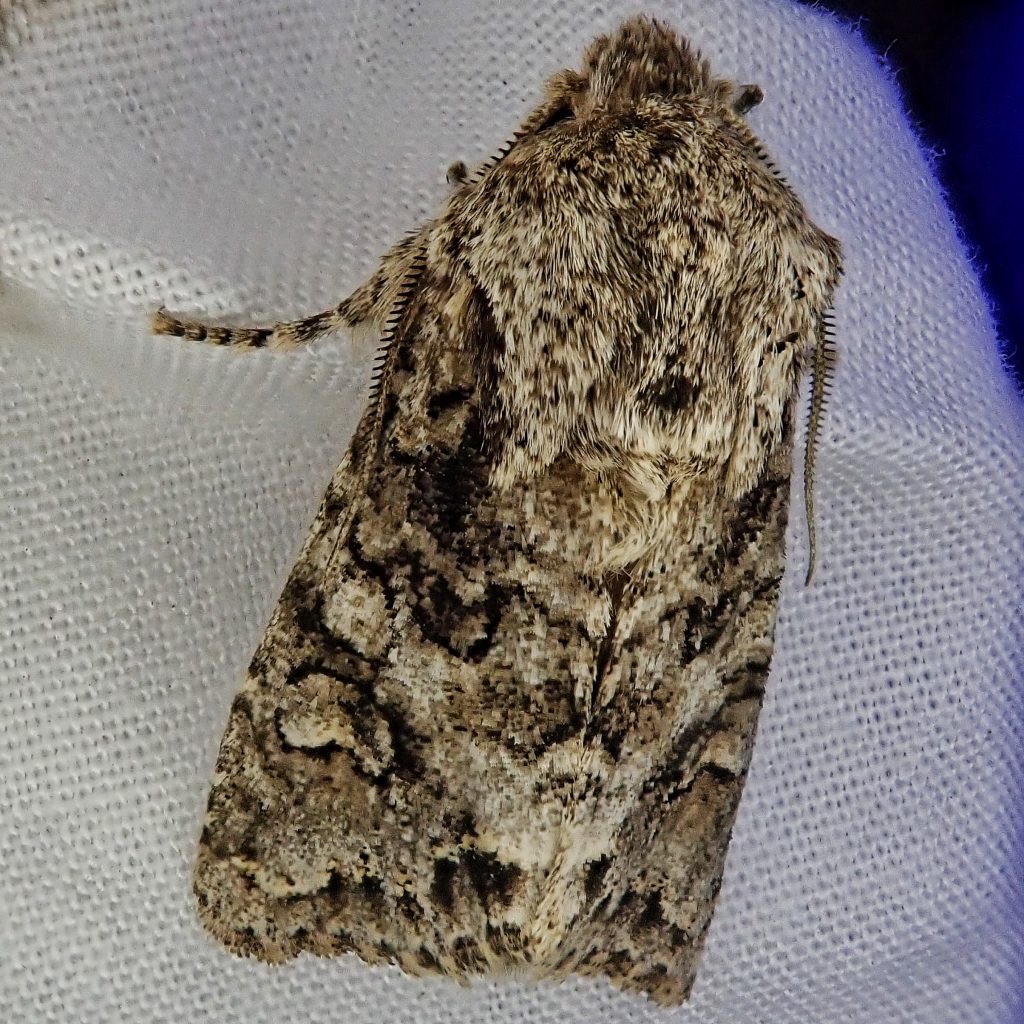
As a colorblind guy, it is always a challenge for me when key identification traits require differentiation of greens, browns, and greys. But fortunately Pam is colorsighted, and she assured me that there was no olive on this moth. So, due to the diffuse basal dash, I felt fairly confident when I sent a photo to my moth mentor Tomas Mustelin, who confirmed that this was indeed a Mottled Oak Woodling Moth.
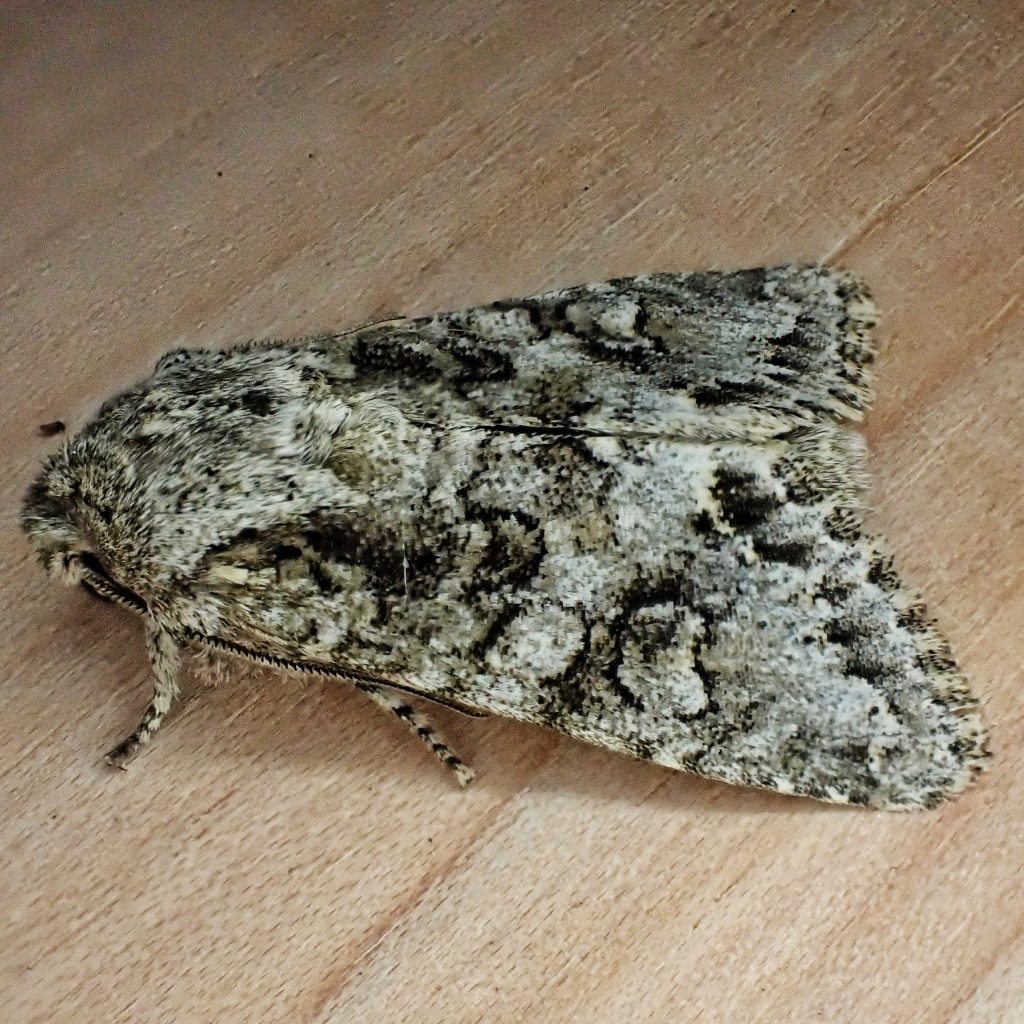
This was the red letter moth from my first night of setting up lights this year. I only had 5 moths come in, but they were 5 different species, and the other 4 were more or less known to me. I say more or less known because I’m rusty, and there were a couple I knew I’d seen before, but couldn’t remember their names. And one I may have seen before, but had never managed to identify.
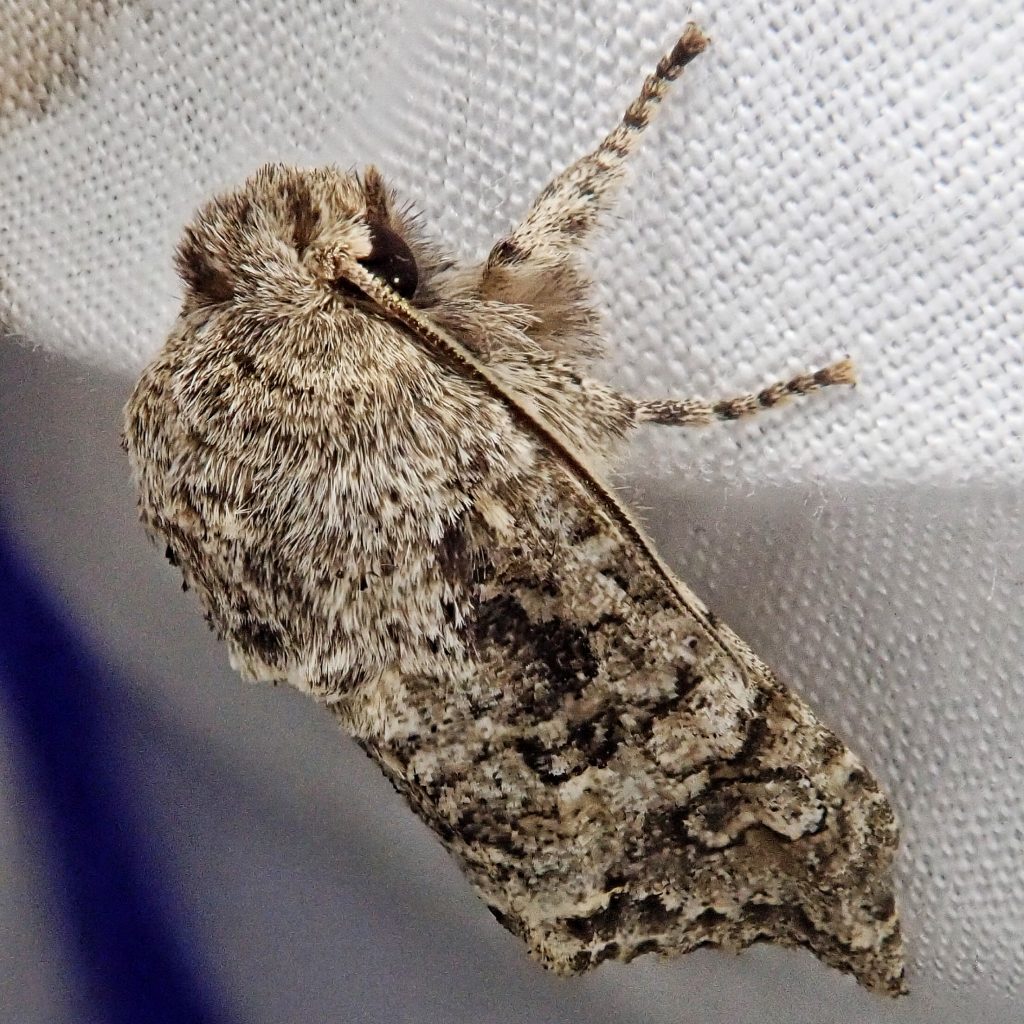
And it was just good to be out at night, with stars overhead, a nip in the air, coyotes howling and barking, an owl hooting from the cottonwoods across the slough, and moths coming to the sheets. It always feels like a bonus time to be able to indulge my passion for cool lifeforms after the sun goes down. Later in the year, when dry, warm days are more common, I really enjoy going mothing on my Friday night, because it feels like I get an extra adventure during my weekend.
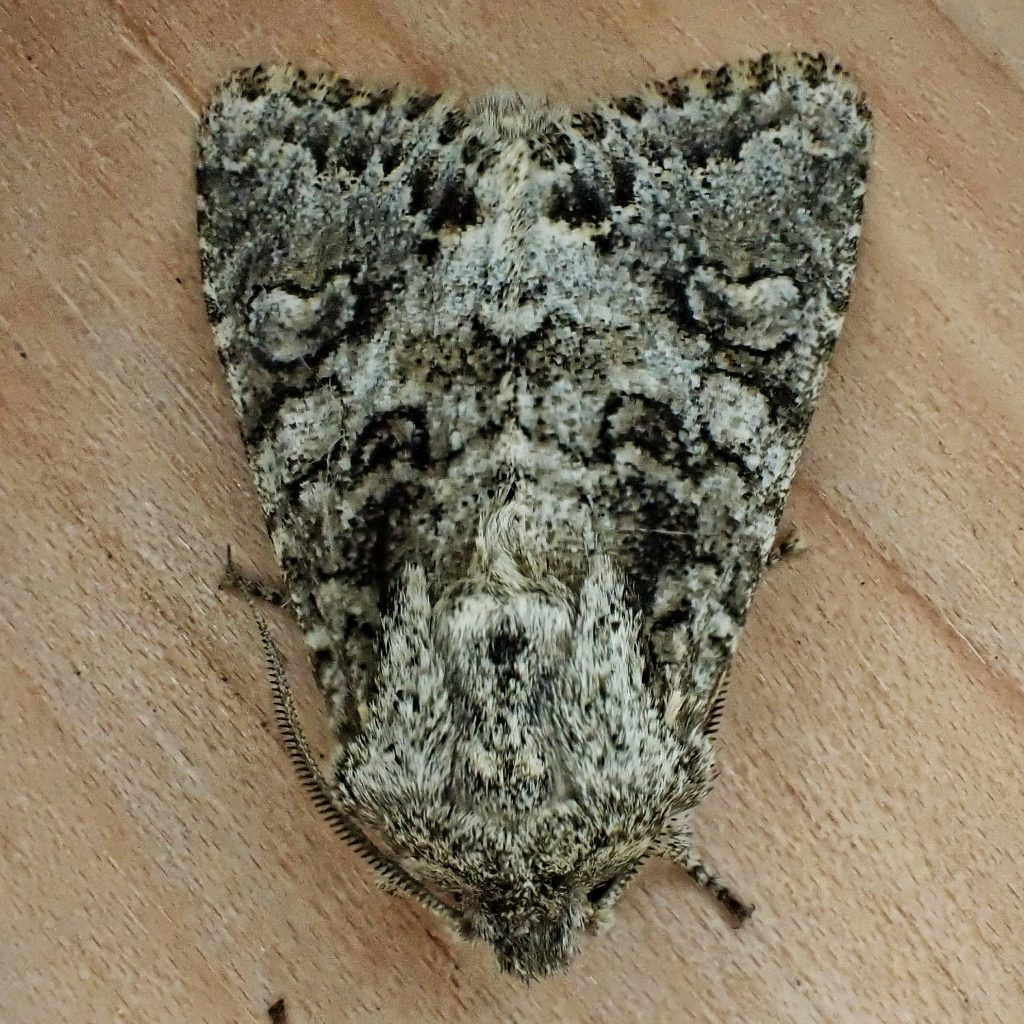
Description– Medium sized moth (fw length 14-17 mm) with black and white mottling and shades of brown and grey, and a sculpted thorax; there is a diffuse basal dash; the transverse lines are doubled and filled with light, whitish grey; the subterminal line is incomplete, with black marks on the anterior side; the orbicular spot is oval and filled with light grey, and the reniform spot is irregular, filled with grey, and darker on the medial third; hindwing is greyish white, with dark veins and sparse speckling.
Similar species–Egira cognata has extensive olive on the forewings, and lacks a diffuse basal dash.
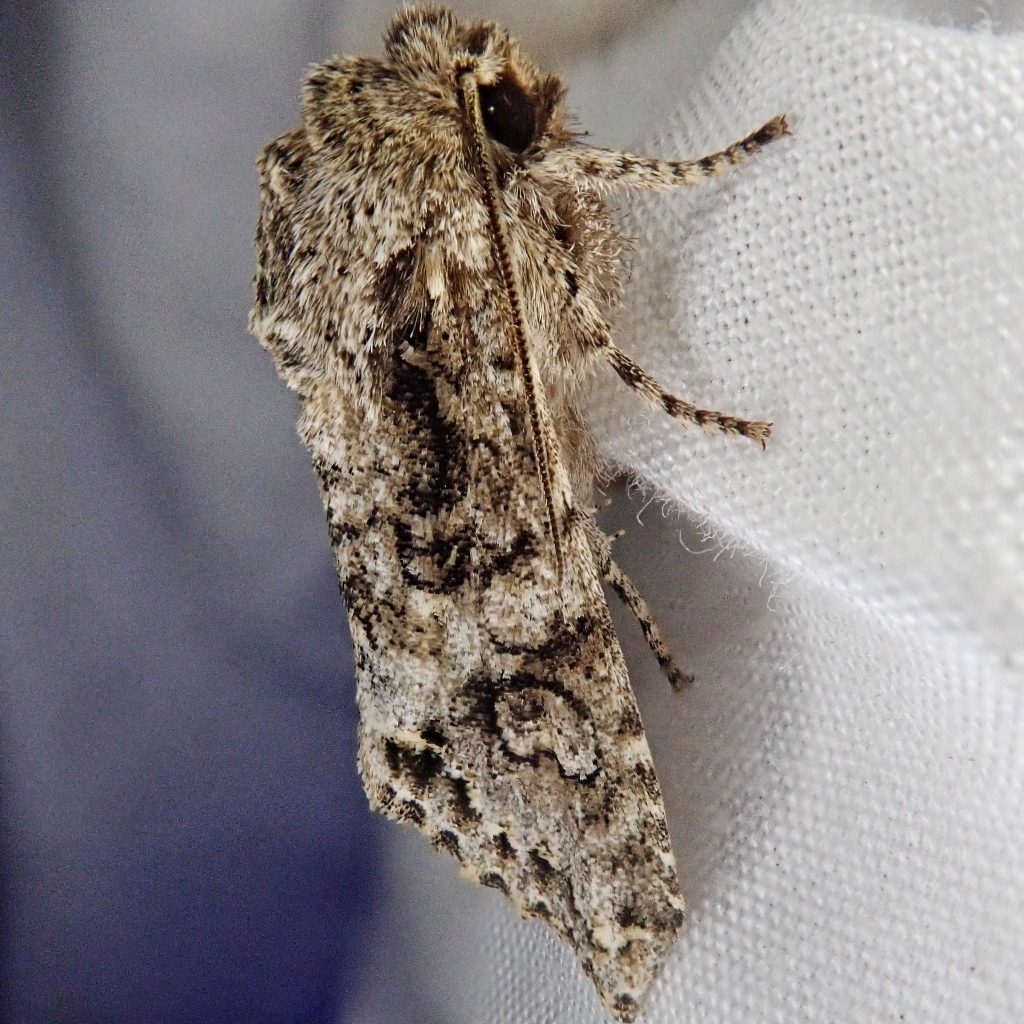
Habitat– Wooded areas containing at least some oaks.
Range-West Coast endemic; primarily west of the Cascades in our region, although their range extends east a bit in the Columbia River Gorge.
Eats– Larva are host specific to Quercus (oaks)
Eaten by- Both larvae and adults are preyed upon by any insectivores that can catch one
Adults active-February through April
Etymology of names– Egira is named for the Ancient Greek city Aegeira, although I have no idea why. Many thanks to Rhona Watson for informing me of this. The specific epithet februalis refers to the early flight season of this species.
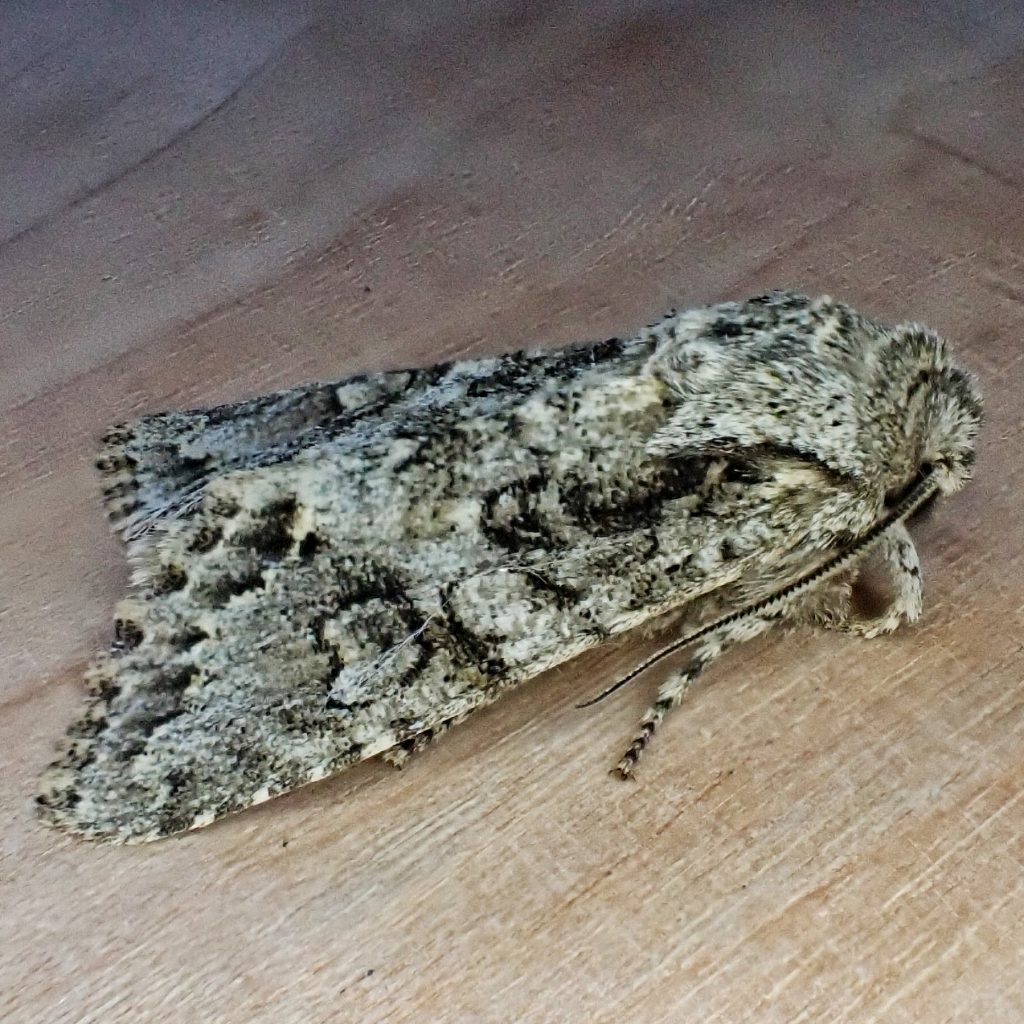
https://bugguide.net/node/view/180044
http://mothphotographersgroup.msstate.edu/species.php?hodges=10510
